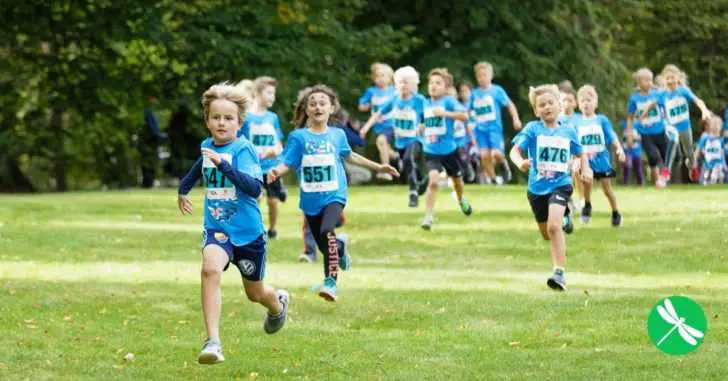In the mosaic of life, some children navigate a distinctive path often overlooked or misunderstood. Today, we invite you into the world of children like Cal, who possess an incredible universe within, brimming with curiosity, love, and boundless energy. Cal, a remarkable 4-year-old, embarks on a unique journey.
Despite grappling with a speech delay, his spirit remains unbroken, his hunger for knowledge insatiable, and his heart limitless in its capacity for affection.
This narrative embarks on a journey uncovering the trials and triumphs of children like Cal, who traverse a world where words don’t always flow as effortlessly as they do for others. We’ll delve into their hurdles while celebrating the sheer determination fueling their quest for effective communication.
Join us as we illuminate this path, guided by simplicity, empathy, and a profound understanding of the distinct language these children speak. Together, we’ll explore the richness beneath unconventional speech, a realm teeming with inspiration and promise.
Unveiling Cal’s Struggle: Overcoming Haircut Fears
Let’s delve deeper into Cal’s daily life and the distinctive challenges he confronts. Picture the anticipation as he enters the local hair salon for a haircut. An everyday task for many children, but a daunting adventure for Cal. The buzzing of clippers sends shivers down his spine, and the sound of scissor blades nearing his ears triggers waves of panic.
For Cal, a haircut is a carefully choreographed event where he seeks solace in his mom’s embrace. Seated in the chair, he turns one side of his face toward the hairdresser, pressing the other into his mother’s chest. It’s an unspoken pact, a bond of trust ensuring his safety. His mom becomes his shield, her presence a reassurance.
During one haircut, a glimmer of hope emerged. Cal’s mom asked the hairdresser to use scissors instead of the intimidating clippers, preserving his preferred longer hair while preventing unwanted mullet-style growth. As the hairdresser meticulously trimmed, she engaged Cal in conversation about school.
“What grade are you in?” she asked.
“Um, pee-tay,” Cal responded, enunciating carefully.
The hairdresser, puzzled, turned to Cal’s mom. “How do you understand him?“
This scenario resonates with many parents of children with speech delays. Cal, like many others, possesses an extensive vocabulary and comprehension beyond his years. However, his speech delay leads to intriguing word mix-ups like “yokker” for “soccer” or “toocah” for “sticker.” Deciphering isn’t always easy, but his family has crafted unique translation techniques.
Cal’s mom explained, “What’s the sound at the beginning?“
“Sssss,” Cal hissed proudly.
“Oh, sssoccer,” she responded, gently guiding him.
The appointment continued similarly, with the hairdresser seeking understanding from Cal’s mother.
In moments like these, we glimpse the daily challenges faced by children like Cal. His speech delay means his words don’t always align with expectations. Yet, behind these hurdles lies a young mind brimming with ideas, curiosity, and an unyielding desire to communicate.
Dispelling Common Misconceptions:
Cal’s experience at the salon mirrors a broader issue children with speech delays often encounter: misconceptions about their communication abilities. This scenario reflects the bewilderment many express when confronted with unconventional speech patterns.
Beyond the salon, these misconceptions infiltrate various aspects of life. Teachers, relatives, or strangers might marvel at how parents decode their children’s words as if it’s a miraculous feat.
Cal’s mom recalls moments like these, where she becomes her son’s translator, bridging his unique speech with the world’s expectations. “How do you understand him?” is a question she’s heard countless times. It underscores the gap between speaker and listener, highlighting the daily battles faced by children like Cal.
Unique Communication Patterns:
What might not be apparent is that children with speech delays are often a blend of contradictions. Cal, for instance, possesses a vast vocabulary and impressive comprehension surpassing typical expectations for his age. Yet, expressing this wealth of knowledge reveals his speech delay through intriguing word mix-ups like “yokker” or “toocah.” These linguistic twists, seemingly quirky, affirm Cal’s resolute determination to communicate.
A Language of Their Own:
Parents of children with speech delays embark on a linguistic expedition. Cal’s mother, like many, has mastered deciphering his intricate language. She listens keenly, gauges context, and repeats recognized words, silently piecing together his meaning. It’s a skill born of love and necessity, a bridge between unconventional speech and profound understanding.
Navigating Understanding:
While parents like Cal’s grasp their children’s unique speech, not everyone possesses the same level of familiarity. The challenge arises when others engage without that deep connection. This deepens misconceptions and questions the child’s comprehension.
Impact of Words:
Beyond speech nuances lies a deeper issue—the profound impact of chosen words when discussing children like Cal. Words shape perceptions, fostering empathy or, regrettably, instilling shame. In this language realm, the complexity unfolds.
Shifting Perspectives:
The hairdresser’s reaction isn’t isolated but mirrors a broader societal misunderstanding. Children with speech delays are discussed as invisible or lacking understanding, unwitting spectators in conversations that should include them actively.
It’s akin to an entertaining sideshow, a mother conversing with her “flawed” child, a spectacle of fascination. Questions come, some intrusive, laden with curiosity: “Does he always talk like that?” or “What’s wrong with his speech?” Then there are inquiries shamelessly delving into medical histories, evaluations, and interventions.
Importance of Support:
For Cal and many like him, overcoming speech delays involves a supportive network. Cal began a tailored pre-K program, working with a speech-language pathologist thrice weekly. His teacher also caters to developmental delays. This nurturing setting shaped Cal’s progress significantly.
Cal’s mother deeply appreciates her son’s care and the remarkable transformation she’s witnessed since starting school. Tangible progress arises, a testament to the invaluable support from dedicated professionals.
A Transient Hurdle:
Remember, a speech delay like Cal’s is temporary. With time and support, he’ll grow into a third grader, a sixth grader, and an adult, with faint memories of “yipsers” for “scissors.” Shame isn’t remedied through exercises or interventions.
The real challenge, as parents of children with speech delays attest, isn’t the delay itself. It’s not appointments, assignments, or inquiries. The true challenge is knowing these children, replete with brilliance and love, are often perceived as diminished due to their speech.

Children of Infinite Potential:
Cal, like others, isn’t just a child with a speech delay. He’s radiant, loving, and vivacious, passionate about Star Wars, relishing nail painting, crafting stories, and dissecting to understand. He traces letters, a testament to his relentless self-improvement.
They’re not defined by delays; they’re individuals with immense potential. Celebrating their abilities, we acknowledge their brilliance, resilience, and ability to inspire.
Tips for Understanding:
To foster a compassionate environment:
1. Listen with Patience: Engage attentively without interrupting.
2. Nonverbal Communication: Interpret gestures, and expressions, and encourage alternative communication.
3. Avoid Negative Labels: Focus on strengths, and celebrate uniqueness.
4. Seek Professional Guidance: Encourage seeking help promptly.
5. Foster Inclusivity: Encourage understanding among peers.
6. Empower Communication: Support aids and reinforce efforts.
Embracing Diversity and Potential:
Supporting children with speech delays isn’t just about differences; it’s embracing diversity. They offer unique perspectives, exhibit resilience, and contribute to inclusive communities.
Their experiences shape advocates for inclusivity. Celebrating their potential enriches us all.
Embrace diversity and celebrate potential. These children aren’t defined by speech delays; they’re beacons of brilliance. Let’s advocate for understanding, creating a world where every child, irrespective of speech, thrives.




